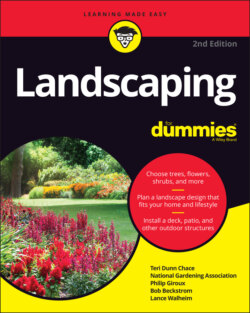Читать книгу Landscaping For Dummies - Lance Walheim - Страница 91
About wood alternatives
ОглавлениеYou can construct many hardscape projects from lumber alternatives, principally plastics and composites, which we discuss here:
Plastic materials such as PVC (polyvinyl chloride) vinyl and fiberglass reinforced plastics (FRP) are generally used for fencing, arbors, deck skirting, and lawn edging. Many styles and sizes are available; they’re strong and versatile and require no maintenance. Some plastic fence materials are sold as kits, making installation easy.
Composite decking boards (CDB) are made from recycled or reclaimed materials with polyethylene (HDPE or LDPE) plastic or PVC mixed with wood fiber, rice hulls, or other fillers as well as a blend of chemical additives to create a rigid product that won’t rot, splinter, warp, or crack. These are commonly referred to as Trex. Trex, like Kleenex in the world of facial tissues, is actually a brand name. Similar products include New Tech Wood, Fiberon, and Timbertech.In recent years, the marketplace and many contractors have embraced non-wood products because they have a lot going for them, such as:They have a convincing wood-like look that is truly aesthetically pleasing.They’re tough, resistant to mildew, mold, and rot.They’re easy to maintain — just spray off with water from time to time.They’re available in many colors (though the brightness will fade over time).Generally they’re more expensive, but composites hold up much better and for much longer than wood and, in the end, if you factor in less maintenance, using them could end up being about the same investment or perhaps even a savings for you.Composites are a good choice for decking, railing systems, and landscape timbers. They may be used pretty much as you would use regular lumber, though we recommend always creating pilot holes for nails and screws. The boards can be cut with a circular saw, require little to no maintenance, and don’t need to be painted or stained.
